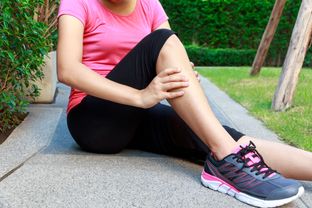
As beneficial as physical exercise can be, one of the most obvious drawbacks is the fact that it makes you susceptible to injury. The injury that we are going to focus on today is a condition known as ‘shin splints’ and although it commonly affects runners, in reality it can affect anybody, at any given time. Shin splints can vary in terms of overall pain and discomfort, and while levels of severity can vary, you will still want to do your very best to help ensure that you never suffer from this condition affecting the tibia. The tibia, or shin bone, as it is also known, is the second-largest bone in the body, which is why shin splints can make life so uncomfortable. To help you to better understand this injury, here’s a better look at the condition known as ‘shin splints’.
What are shin splints?
Shin splits is a name given to describe a type of sharp pain located on the lower leg, across your shin bone, believe it or not. If we’re getting technical here, the pain is located on your tibia. It may begin fairly mild, more like a dull ache or throbbing, but overtime it will get worse, especially when you take part in physical activity such as running.
What causes the condition?
Shin splints is commonly brought on by physical activity such as running, but why? Well, the condition is often brought about when the shin bones, muscles, and connective tissues attaching the shin bone to the muscles surrounding it, become damaged due to the excessive amounts of force placed upon them during exercise. This intense physical exertion and force placed upon the affected parts of the anatomy causes the muscles to become swollen and inflamed. When swollen, they then place an increased amount of pressure on the shin bone, which is what is responsible for the pain and discomfort. The greater the levels of swelling and inflammation, the more pain and discomfort the affected individual is likely to experience. On top of that, stress reactions due to fractures of the bones can also bring shin splints about. You see, with each footfall, this constant pressure via the impact of each step can cause very tiny cracks to form in the shin bone. Over time, the body can repair these tiny cracks by itself, but if the individual in question continues to exercise, this exasperates the problem and makes these fractures even worse, which causes more pain.
What are the symptoms?
Although it may not seem like it, a potential blessing associated with shin splints, is the fact that the injury is not subtle. If you are affected by it, you will know about it. Symptoms include pain and discomfort in the shins, especially during exercise, which may ease slightly as your workout draws to a close. In more extreme cases however, the pain and discomfort will be constant. Some people with particularly bad cases of shin splints even find that their lower legs have become swollen and inflamed.
Treatment Recommended
Products recommended for swelling, redness, pain, and inflammation, and if coolness makes your pain feel better:
Ice Substitute Poultice
Bruise Relief Liniment
Muscle Therapy Massage Oil
Products recommended when swelling and inflammation are gone, but you still feel pain, stiffness, weakness, and/or sensitivity in cold and damp weather, and if heat makes your pain feel better:
Pain Relief Liniment
Muscle Therapy Massage Oil





